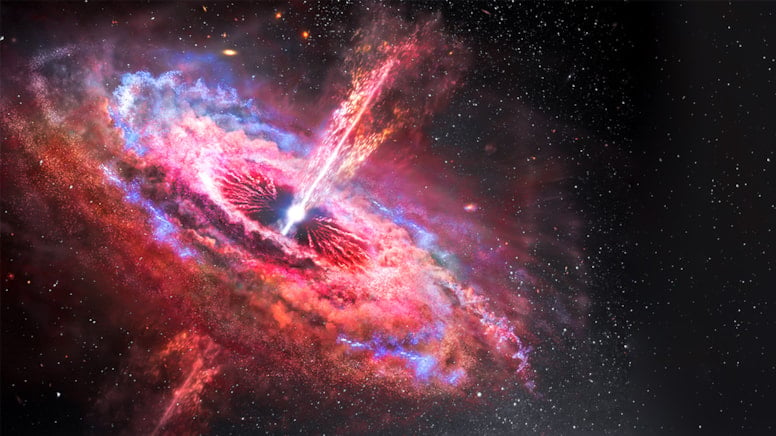Einstein's 'subduction zone' theory confirmed
A study conducted at Oxford University has confirmed the “subduction zone” theory of Albert Einstein, one of the most important people in the history of science.

Although black holes, which swallow everything in their vicinity, can be accessed from the outside, the intriguing darkness of space hides a lot of information from the outside world because this interaction is one-way. The latest research sheds some light on the limited knowledge about black holes.
Monthly Notices of the Royal Astronomical Society published a study on black holes by a team from Oxford University.
The team of astronomers used X-ray telescopes and data from the International Space Station to better understand black holes.
For the first time, the team observed the so-called “plunge region” in a black hole about 10,000 light-years from Earth.
“We had been ignoring this region because we had no data,” said Andrew Mummery, lead author of the study and a member of Oxford's physics department. Stating that Albert Einstein's theory predicted this “plunge”, Mummery said that they were able to observe it for the first time and added, “Now that we understand it, we cannot explain it in any other way.”
“People said it would be impossible, so it's really exciting to confirm that he was there,” Mummery said, noting that they specifically went out to look for the submersion site.
Mummery said of Einstein, whose many theories have been proven before, “He is a difficult man to bet against at this point.”
WHAT IS THE SUBDUCTION ZONE?
In his theory, scientist Albert Einstein states that it is impossible for particles to follow their trajectories when they approach a black hole. Instead, Einstein states that particles dive rapidly into an object close to the speed of light. This region is called the “plunge region”.
Mummery said that matter from nearby stars forms large disks around black holes and likened them to a flowing river. “The plunge zone is like the edge of a waterfall. All your support disappears and you crash headfirst. Most of what you can see is the river, but there is a small region at the very edge, that's basically what we found,” Mummery summarized the research.
On the other hand, another team of Oxford researchers is working on images of the black hole, hoping to image more distant black holes.
The first image of a black hole was published by the Event Horizon Telescope (EHT) in 2019. This black hole is located at the center of the M87 galaxy, 55 million light-years from Earth.
It is estimated that there may be between 10 million and 1 billion black holes in the Milky Way Galaxy.
Astronomers detect such black holes when another star is pulled into the black hole's gravity.
Albert Einstein first predicted the existence of black holes in 1916 with his general theory of relativity.

































